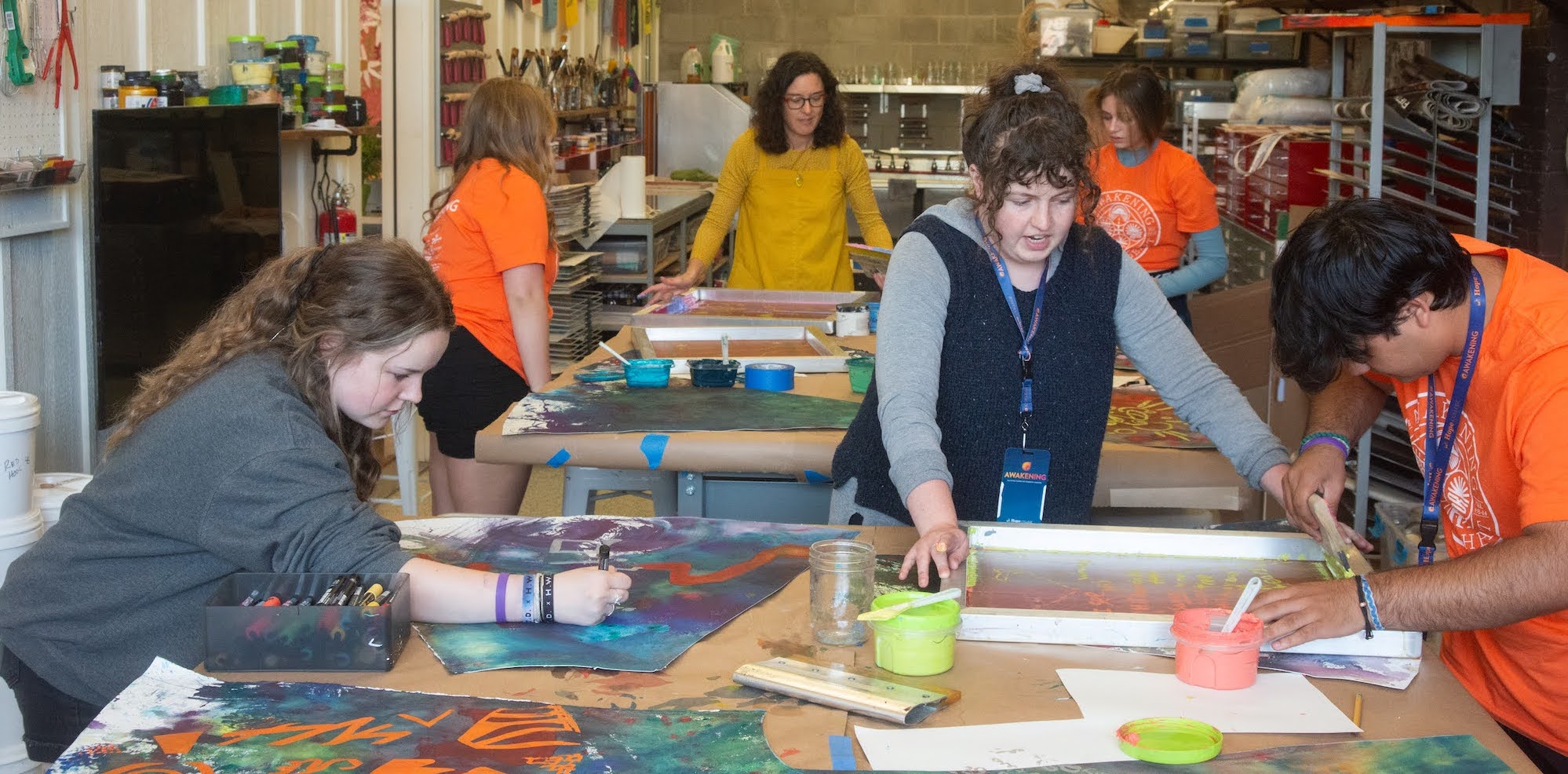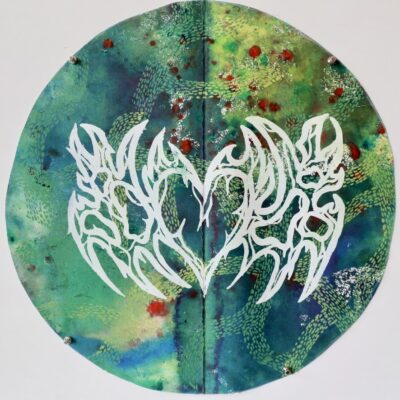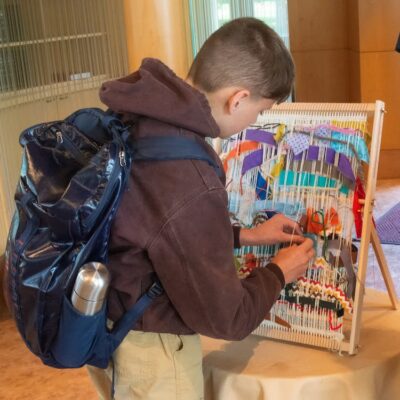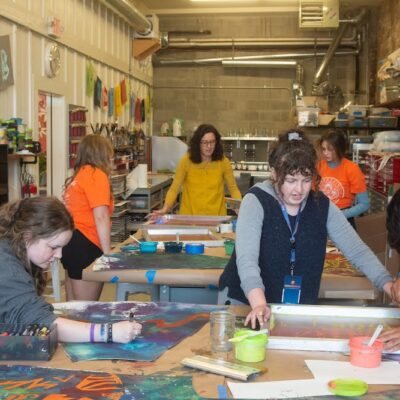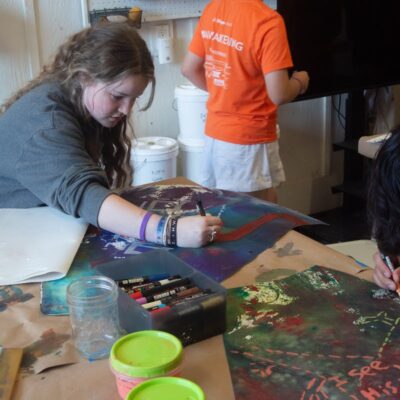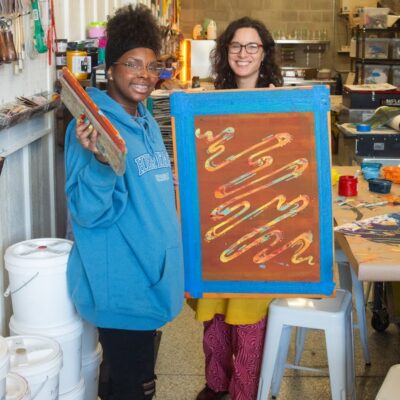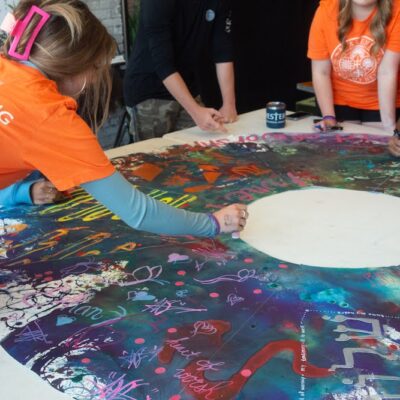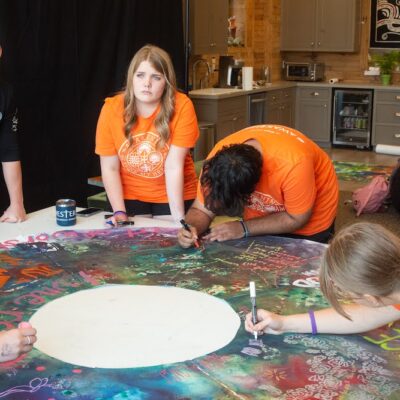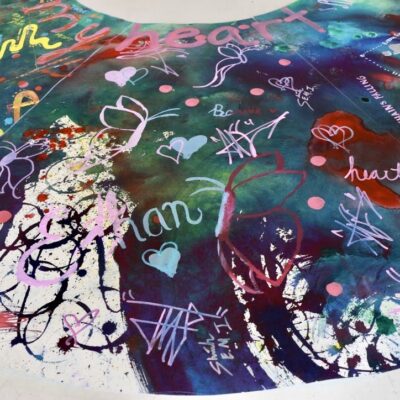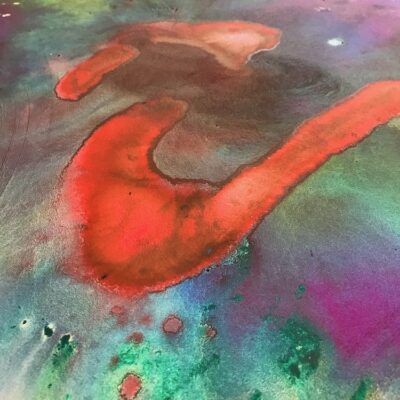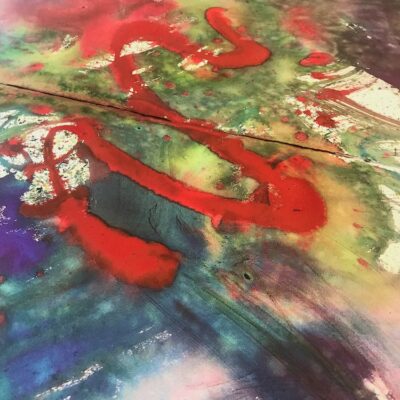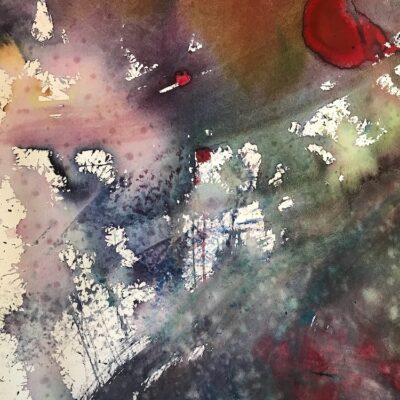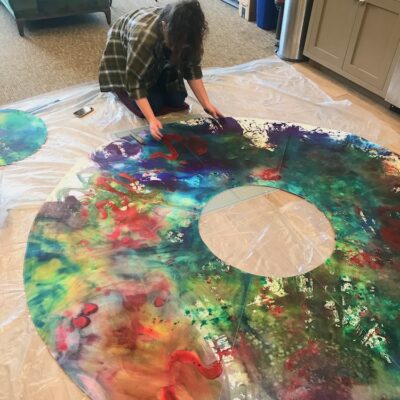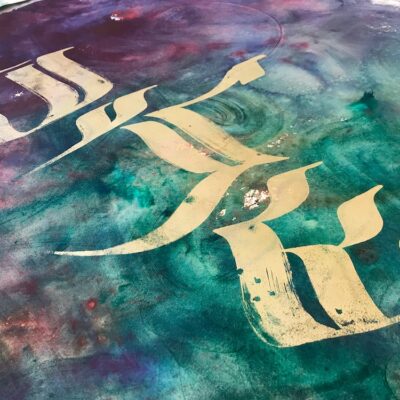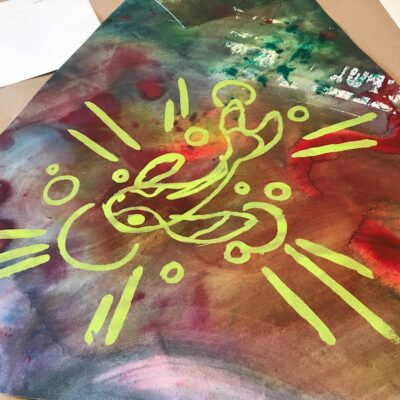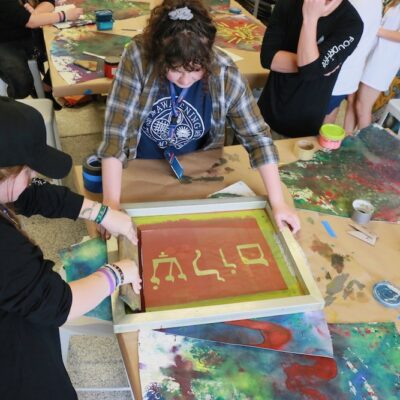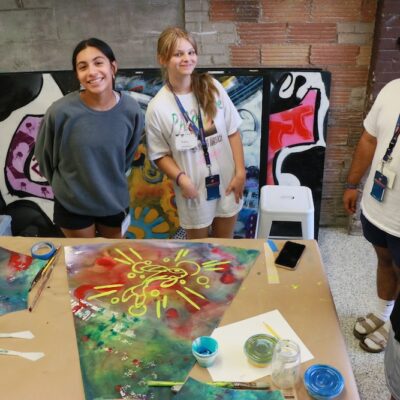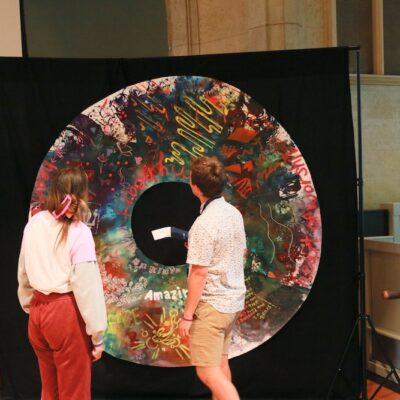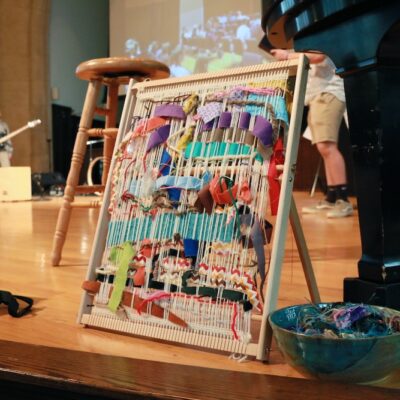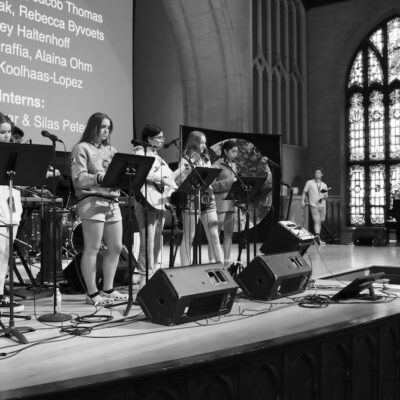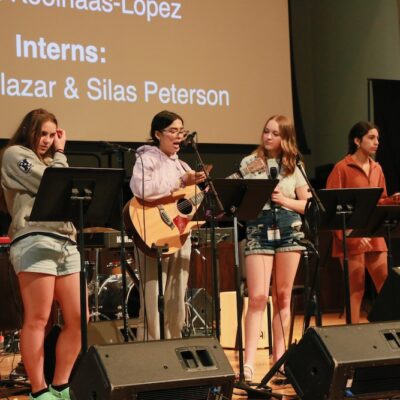It was such a joy to lead the Visual Arts elective for Awakening at Hope College once again, reflecting on the theme: “Tune Our Hearts,” from the hymn Come Thou Fount.
For Awakening 2023 we had the privilege of leading a visual arts activity in a chapel service for all the participants, as well as working alongside eight students to make a large piece of visual art for the Festival of Worship, in response to the theme “Tune My Heart,” from the hymn Come Thou Fount. During the week we thought about what it means to be in harmony with God’s love and work in the world.
For our chapel service, I wanted to remind our students that though God is the same now and always, tuning our hearts to God does not mean that we yield up our individuality. Just as we are one body with many parts, being attuned to God does not mean fitting into a mold; participating in God’s work calls for all the diverse gifts and qualities we have. Tuning our hearts is a process of taking our fearfully and wonderfully made selves and growing closer and closer to God. On the way into chapel students were invited to grab strips of fiber that spoke to them. There were pieces of cotton cloth in different colors, strings of yarn, tidbits of velvet and leather and linen. I had warped a loom with wool yarn ahead of the service, and I invited students into a prayer practice in which they could come forward and offer their whole selves to God, weaving their own unique qualities into God’s ongoing love for the world. In the same way that the yarn maintains its color and size and texture while becoming interwoven with the warp threads on the loom, we come as image bearers, each unique, and each longing to become fully intertwined with God’s plan and purposes for creation.
For our more intensive final piece, we met with eight students for about four hours over the course of the week. Thinking about tuning our hearts to God reminded me of the Old Testament word, “shalom.” Often translated as “peace,” shalom encompasses far more than the absence of conflict. The Biblical concept of peace includes the idea of a harmony that leads to the flourishing of all things, a wholeness and unity, much like the image we receive of all of creation doing well in relationship with God and one another in Eden.
We modeled our work on that of Roberto Torres Mata, who taught a workshop class at CultureWorks last year. Mata lays down layers of inks on paper to create a vibrant background and then adds layers of screen printed images and words. Students worked together to apply inks to a large piece of paper, which we then cut into a ring (lovingly referred to as the “peace donut”) and divided into eight wedges. Each student then drew an image or used words that they think of in relationship to peace, and they screenprinted those images onto their own wedge. On our final day together we reassembled the wedges as they had originally been connected, and we invited students to add another layer of words and images on top using paint pens. Students included things like favorite worship lyrics, or words from Philippians 4, which was the theme passage for the week.
The final “peace donut” carried symbolic meaning on a couple of levels. First of all, the circular nature of the project and the way we assembled pieces from many students is suggestive of wholeness, a shalom between the students that also holds the beauty of each unique peace. The process of making the piece also holds meaning. We are reminded of the arc of God’s work in the world. At first all things existed as God had intended, but through the fall we experienced the fracturing of our relationship with God, the non-human creation and one another. And yet, even in our time of fracture, Christ is at work making peace in every corner of the world. The final layer of the peace donut is an image of Christ’s return, when all things will be made new. The shalom of Eden and the bits of shalom we encounter now will not be forgotten, but will be brought to fullness in resurrection life.
Miranda Craig




